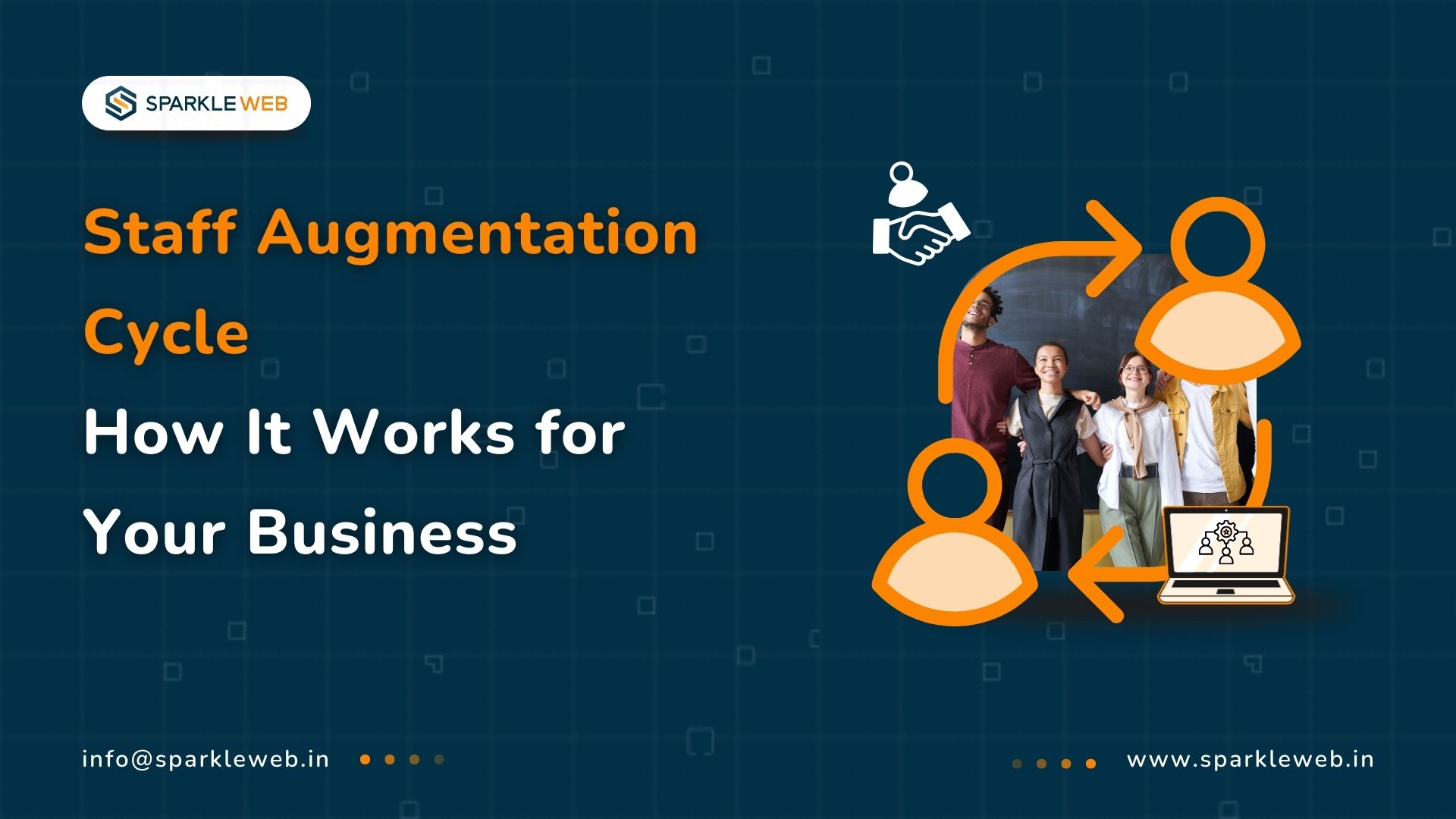In today’s fast-changing digital world, businesses must keep up with new trends and demands. As companies grow, they often need more people to help with different tasks. But instead of going through the long process of hiring full-time staff, many businesses are choosing staff augmentation. This approach helps companies add skilled workers to their teams quickly and efficiently. Whether you need extra help on a project, expert knowledge, or just want to reduce the workload on your current employees, staff augmentation is becoming more popular across various industries.
In this blog, we will walk you through how staff augmentation works and how it can benefit your business.
What is Staff Augmentation?
Staff augmentation is a flexible way for companies to hire temporary or permanent workers to meet their business needs. With this method, companies can tap into a global pool of professionals, helping them finish projects without having to hire full-time staff. This model saves time and money because it does not involve the long-term costs or commitments that come with traditional hiring.
A report from Gartner in 2024 showed that 56% of companies are already using some form of staff augmentation, and 38% plan to use it more in the coming year. This proves that more businesses are seeing the value in staff augmentation.
How Does the Staff Augmentation Process Work?
The staff augmentation process is a cycle that ensures companies find the right talent for the job at the right time. Here’s how it works:
1. Assessing Your Needs
First, you need to identify the gaps in your current team. This means figuring out if you need specialized skills, more people for an urgent project, or temporary staff to handle extra work during busy seasons. During this phase, you also outline the specific skills, qualifications, and experience you are looking for.
Example: A tech company may need developers with experience in React and Node.js for a short-term project with a tight deadline.
2. Finding the Right Talent
Once you know what you need, the next step is finding the right people. Companies can use different platforms or agencies to quickly access a wide range of professionals, cutting the time it takes to hire by 40% compared to the usual hiring process.
3. Screening and Selecting Candidates
In this stage, you review and choose the best candidates. This could involve technical interviews, coding challenges, or reviewing their previous work to make sure they have the skills you need for the job.
4. Onboarding
After selecting the right person, the onboarding process starts. This step ensures that the new team members are introduced to your company’s culture, tools, and project goals. A smooth onboarding process can help staff become productive 20% faster.
5. Integration
Staff augmentation doesn’t just stop at onboarding. The new workers need to be integrated into your existing team. Communication tools like Slack or Microsoft Teams help make sure everyone can work together smoothly.
Stat: Companies that focus on good integration see a 15% boost in project efficiency and team productivity.
6. Monitoring and Feedback
During the project, you keep an eye on the new staff's performance to ensure they are delivering the results you expect. Regular feedback helps keep things on track and ensures continuous improvement.
7. Completion and Offboarding
Once the project is done, the new staff are offboarded, meaning they wrap up their work and transfer any project details back to the company. If the collaboration is successful, many businesses keep in touch with the same professionals for future projects.
Stat: 70% of businesses that use staff augmentation build long-term relationships with the augmented staff for future projects.
Benefits of Staff Augmentation
1. Cost-Effective
Hiring full-time employees can be expensive, especially for short-term projects. Staff augmentation allows companies to save up to 30% on labor costs by only bringing in talent when it’s needed.
2. Flexible
Staff augmentation gives businesses flexibility. Whether you need experts for a few weeks or several months, this model allows you to scale your team without making long-term commitments.
3. Access to Specialized Skills
Finding experts for specific tasks can be hard, but with staff augmentation, you can quickly access a global pool of professionals with the skills you need.
4. Faster Time-to-Market
Having the right team in place helps businesses finish projects faster, cutting down development time by 25%. This means you can launch your product quickly.
Real-World Examples of Staff Augmentation Success
Case 1: A Software Development Company
A medium-sized software company needed to launch a new app quickly. By adding 5 skilled mobile app developers to their team for 3 months, they were able to release the app 6 weeks ahead of schedule, which boosted their market share.
Case 2: An E-Commerce Giant
An e-commerce company faced a surge in business during the holiday season. They used staff augmentation to bring in customer support staff to handle the extra traffic. This allowed the company to scale without overworking its existing team, resulting in a 40% drop in response time and a 20% increase in customer satisfaction.
Conclusion: Is Staff Augmentation Right for Your Business?
Staff augmentation is a flexible and cost-effective way to grow your team. It gives you access to specialized talent when you need it without the long-term commitment of traditional hiring. As the workforce continues to evolve in 2024, more companies will likely adopt staff augmentation as a key strategy to meet their project goals, manage workloads, and access the right skills.
Interested in how staff augmentation can help your business grow? Contact us today to explore more about how we can help you scale your team with the right talent when you need it.



Dipak Pakhale
A skilled .Net Full Stack Developer with 8+ years of experience. Proficient in Asp.Net, MVC, .Net Core, Blazor, C#, SQL, Angular, Reactjs, and NodeJs. Dedicated to simplifying complex projects with expertise and innovation.
Reply